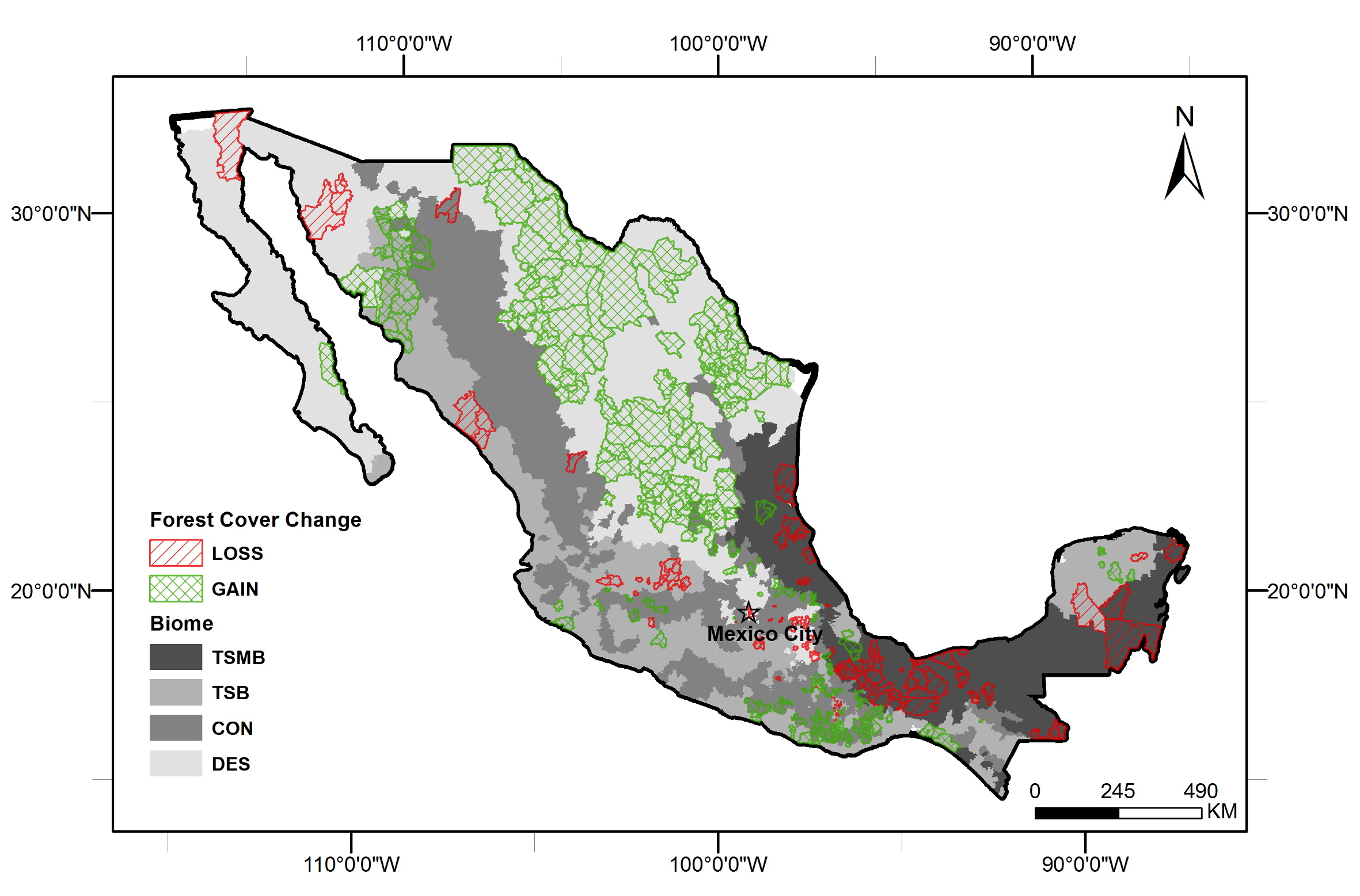
RYAN – Examining the relationship between migration and forest cover change in Mexico from 2001 to 2010
Daniel Ervin, David Lopéz-Carr, Fernando Riosmena, & Sadie J.Ryan
Article first published online: 25 NOV 2019 Land Use Policy
DOI: 10.1016/j.landusepol.2019.104334
ABSTRACT: This project examines the relationship between migration, population, and economic processes, and forest cover change in Mexico from 2001 to 2010. Using multiple regression analyses with remotely-sensed, significant (p < 0.10) change in woody vegetation from 2001 to 2010 as our dependent variable, we explore how environmental, migration, demographic, and economic indicators at the national and sub-national biome scales are associated with forest cover change. Results highlight the importance of international migration in forest cover change, demonstrating that international (and internal) migration processes should also be included in LU/CC research and deforestation policy.
Read the full publication at Land Use Policy.